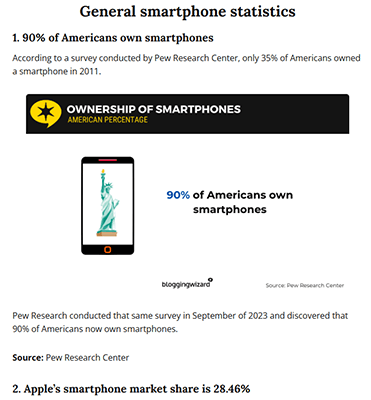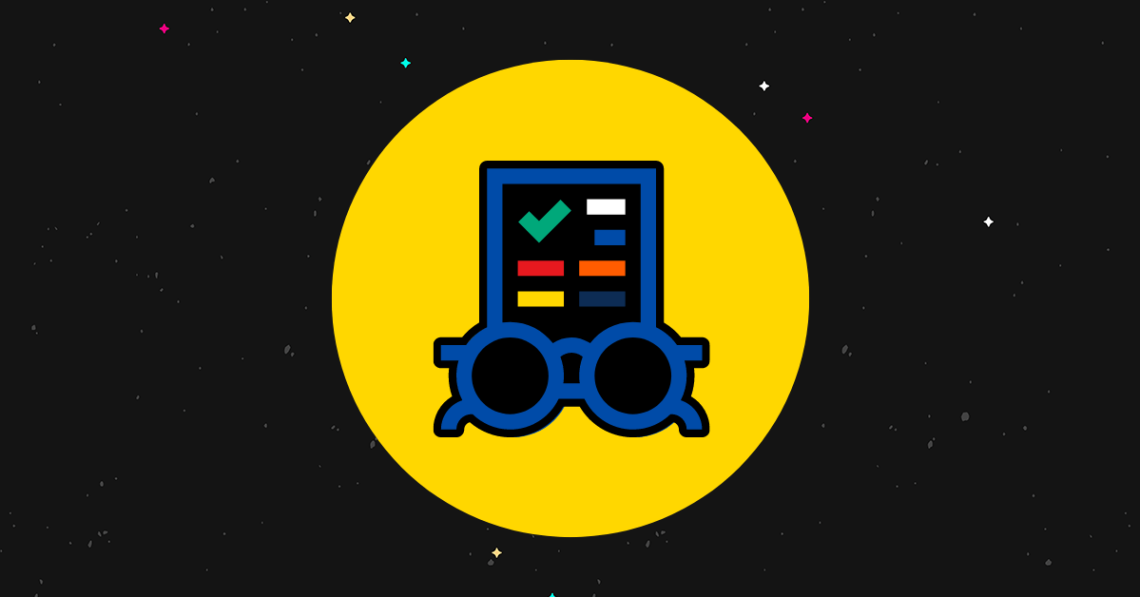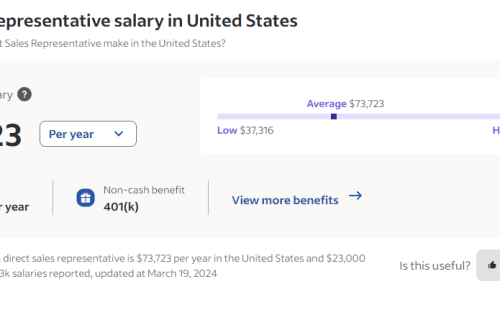Are you interested in improving the readability of your content?
This is an aspect of blog optimization that’s mostly for your readers rather than search engine optimization (SEO).
In this post, we define what readability is, discuss whether or not it’s important for SEO, then cover different strategies you can use to improve it.
What is readability and why is it important for your blog?
Readability is an aspect of blogging that determines a few things in regards to the way your visitors read your articles:
- Whether or not they’re able to physically read your posts.
- How well they’re able to understand your posts.
- How well they’re able to pay attention to your posts.
If your visitors can’t read your posts, they aren’t going to engage with your content long enough to subscribe to your email list, use your affiliate links or buy your products.
You won’t get very many backlinks as a result nor will your bounce rate be as low as you’d like it to be.
All of these points are bad for SEO and bad for sales overall.
In short, if you don’t improve readability on your blog, your content marketing efforts will be in vain.
Is readability important for SEO?
Google says readability is not a ranking factor.
John Mueller of Google was asked in a web conference held in 2018 whether or not things like an article’s Flesch reading score, amount of text it has beneath each heading and the length of its paragraphs have an affect on how well it’s able to rank on Google.
Here’s how Mueller replied:
And they go somewhere else to either convert, or to read more, or to find more information.”
“From an SEO point of view, it’s probably not something that you need to focus on, in the sense that, as far as I know, we don’t have these basic algorithms that just count words and try to figure out what the reading level is based on these existing algorithms.
But it is something that you should figure out for your audience.
That’s something where I see a lot of issues come up in that a website will be talking past their audience…
…A common example is a medical site. You want to provide some medical information for the general public because you know they’re worried about this. And all of your articles use these medical words that are 20 characters long.
Technically, it’s all correct. And you could calculate the reading level score of that content. You come up with a number.
But it’s not a matter of Google using that reading level score and saying this is good or bad, but rather does it match what the people are searching for?
And if nobody’s searching for those long words, then nobody’s going to find your content. Or if they do find your content, they’re going to be like, “I don’t know what this means. Does anyone have an English translation for this long word that I don’t understand?”
And they go somewhere else to either convert, or to read more, or to find more information.”
To summarize, readability is not an official ranking factor, but it can affect how your visitors engage with your site, which, in turn, affects how well your site is able to rank.
Note from Adam: Given the revelations from Google’s algorithm leak, we should generally view what Google’s spokespeople say with a pinch of salt. However, in this case, I feel that what John’s saying in the quote above is correct. If you haven’t already, be sure to check out my video on the leak.
What do studies say about the affect readability has on SEO?
There’s a term we used in the previous section: Flesch reading score, more properly known as “Flesch Reading Ease.”
This is a score that determines how difficult it is to read a piece of text based on the number of words it has, how many sentences it has and how many syllables its words use.
The metric’s scale goes from 0 to 100, and it’s broken up into different grades that determine the minimum reading level you need to have (based on the American school system) in order to understand the piece of text it’s grading:
- 0 to 10 – Professional
- 10 to 30 – College graduate
- 30 to 50 – College
- 50 to 60 – 10th to 12th grade
- 60 to 70 – 8th and 9th grade
- 70 to 80 – 7th grade
- 80 to 90 – 6th grade
- 90 to 100 – 5th grade
It’s recommended to aim for a Flesch reading score that’s 60 or higher.
Portent found no correlation between a site’s readability score and its ability to rank. However, they did notice that articles in the top 30 spots on Google had a Flesch reading score that ranged from 51.8 to 53.1, putting the majority of high-ranking content in the 10th to 12th grade reading level category.
Ahrefs analyzed 15,000 keywords and also found no correlation between a page’s readability score and its ability to rank.
Strategies to use to improve readability on your blog
We do know how important readability can be for your audience.
So, here are eight methods you can use to make your content easier to read:
- Write in a conversational tone.
- Break up posts into multiple sections.
- Use shorter paragraphs.
- Write shorter sentences.
- Use simple language.
- Add bullet points to posts.
- Add graphics to posts.
- Use a readability tool.
1. Write in a conversational tone
One of the easiest ways to improve the readability of your blog posts is to simply write as you would speak.
Be professional, but keep a casual tone as you write your article.
Write a few paragraphs, then speak them out loud. If your writing sounds as natural to speak as it does to read, you’re on the right track.
2. Break up blog posts into multiple sections
Readability is about a lot more than how well you write. It’s also about the way your articles appear on screen.
If you write blog posts in the same way as you’d write reports for school, you’re going to make it difficult for readers to do what they love doing most on the web: skim!
Find ways to break up your posts into multiple H2 sections. You can also break up H2 sections into H3 sections, H3 sections into H4 sections, and so on.
For non-list posts, H3 sections are useful for breaking up primary sections into smaller topics. It can help you explain a topic better and prevent you from going on for too long about a particular topic.
3. Use shorter paragraphs
If you really are worried about your articles being too long and, therefore, hard to understand, try writing short paragraphs.
Shorter paragraphs might help you simplify your writing and prevent you from carrying on too long about a particular thought.
Plus, there are 8.65 billion active mobile devices in the world. The chances of your visitors reading your articles on a smartphone are high. If you write shorter sentences, your articles won’t look like long walls of text on those devices.
4. Write shorter sentences
This is another simple trick for keeping your writing simple and easy to understand.
Short sentences are easier for a broader chunk of the population to read, especially if you don’t include long, difficult words in your writing.
Just don’t make your sentences so short that your writing starts to sound robotic or unnatural.
5. Use simple language
This tip should be a given by now.
Long words and words that have a lot of syllables will make your text harder to read.
It’s okay to throw in a few difficult words here and there, especially if it’s a technical term for your niche, but for the most part, use simple language.
Abbreviations, variations and synonyms
You should also eliminate too much repetition in your writing.
If you find yourself needing to mention a particular word or phrase a lot in an article, use abbreviations, variations and synonyms instead.
For example, if you’re writing an article about WordPress, you only have to mention the phrase “content management system” once. You can use “CMS” for all other mentions.
Just make sure you write “(CMS)” after the first mention of “content management system” so your audience knows what you’re abbreviating, like this:
WordPress is the most widely used content management system (CMS) in the world.
6. Add bullet points
Bullet points aren’t just for data and facts. You can break up any list into bullet points and even thoughts.
We could have written out the bullet points we used at the start of this post, but the sentences are much easier to read and stand out better as bullet points.
7. Add graphics
Like we said, a lot of your visitors are going to skim your articles rather than read them from start to finish.
Some will even mostly pay attention to the images in your articles.
If you want to make getting through your posts even easier, add images to break up large collections of paragraphs.
You should especially include graphics that contain key data in a stylized format.

Graphic design tools like Canva and Visme are great for this.
8. Optimize posts with a readability tool
If you’re really unsure about the readability of your blog posts, optimize them with a readability tool.
Some SEO plugins for WordPress have built-in readability tools that give your articles readability scores and even provide tips on how to improve it.
Yoast is probably the most popular, but Rank Math has a content readability score as well.
You can also use a third-party tool like Hemingway App.
Just paste your article into the tool, and it’ll highlight specific pieces of text you should optimize in order to improve the text’s score.

Final thoughts
Readability matters. If your readers cannot consume your content for whatever reason, then they won’t be subscribing to your email list, buying your products, or clicking on your affiliate links.
And while readability is unlikely to be a direct ranking factor for Google, it will affect your rankings indirectly.
So, use the strategies I discussed above to make sure your content is as easy to consume as possible.





